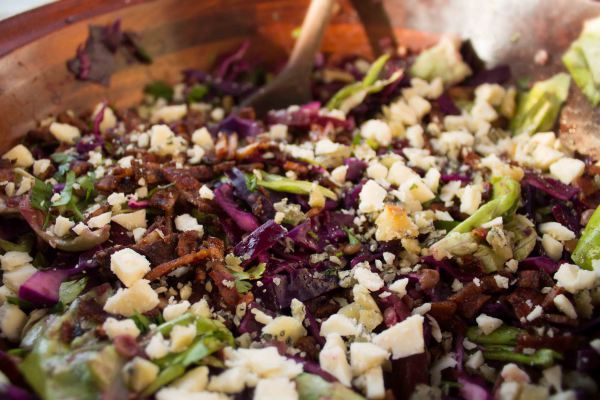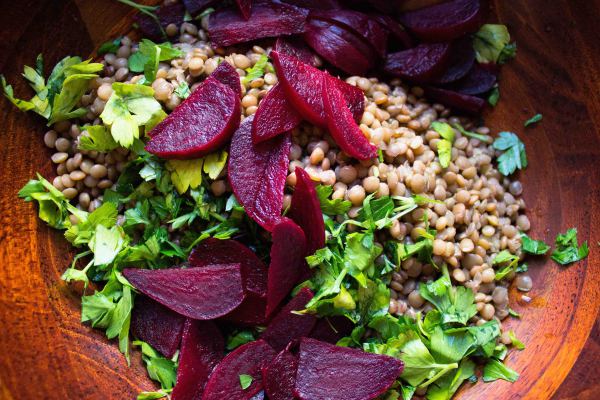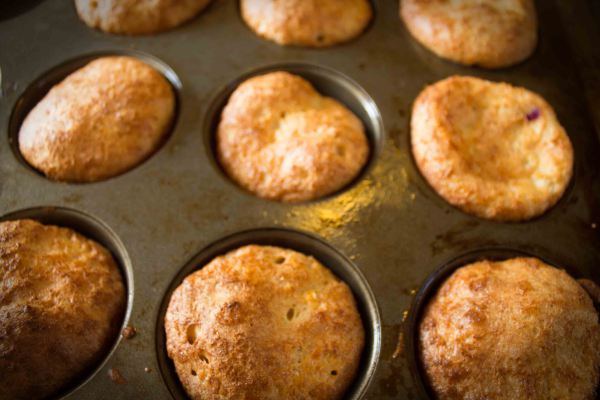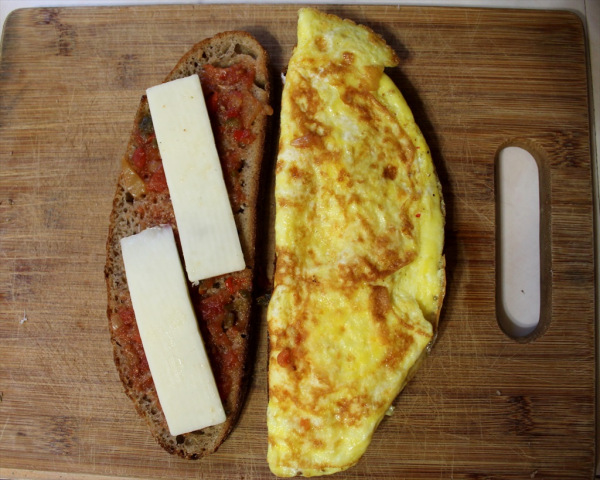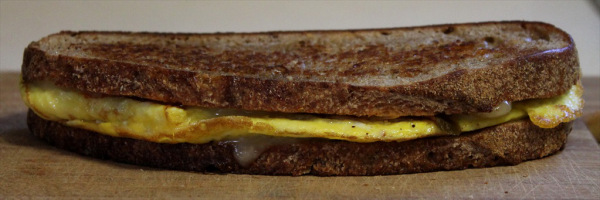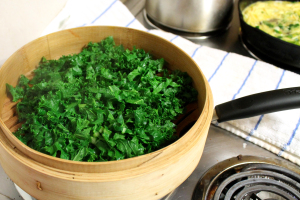
 Occasionally we worry about how we are perceived. More specifically, we worry about how our son is perceived at school, and indirectly how that makes us look. I should really phrase this in the first person singular: I sometimes worry about this. Which is absurd. Nonetheless, it is a fear of mine.
Occasionally we worry about how we are perceived. More specifically, we worry about how our son is perceived at school, and indirectly how that makes us look. I should really phrase this in the first person singular: I sometimes worry about this. Which is absurd. Nonetheless, it is a fear of mine.
The fear of perception also gives way to a secondary fear that our children will want what other kids have. Of course, that is really an issue of my own, in that I often want what others have.
Let me go back to the original point about school and food. For most of the year our son’s school lunches consist of a hodgepodge collection of containers filled with all sorts of homemade things and fruits and vegetables. (The main exception to this pattern is the weeks following Halloween when bags of chips and small candy bars take up some of the space.)
We are not purists when it comes to the locavore lifestyle, but we do strive to eat locally all year long. We’d like our children to grow up eating this way so that they understand the rhythm of the food seasons and the benefits and joys of eating within these limitations.
Fortunately we are blessed to live in a region with a strong and vibrant local food culture, which makes it much easier for us than if we lived somewhere else. Finding locally-grown vegetables and fruits—at least apples—is possible all year long.
However, as delicious as the local carrots and apples are, our children are not wonder kids who only eat these things. They would happily eat more processed foods. Luckily we have learned that we can make healthy-ish processed foods at home.
I say “healthy-ish” because clearly cookies are not healthy, but at least homemade cookies can be made with 100% whole grains, and a reduction in sugar, often replacing the sugar with honey and maple syrup. Crackers can be made with sourdough starters, whole grains, and overnight soaks to render them more digestible.
This graham cracker recipe has been a lifesaver for us. Our youngest loves them, and they seem to provide him some relief from teething. Without a doubt making crackers from scratch is much more work than buying them, but they are also much tastier than store-bought, and the ingredients are local and natural. So long as I don’t charge for my baking time they’re much cheaper too! Pretty awesome.
The recipe is adapted from Peter Reinhart’s Whole Grain Breads, the main changes are the addition of multiple grains, butter to make them softer, and a slight reduction in the honey. These can be made with just whole wheat flour, but you can really use any combination of wheat and other flours (barley, spelt, emmer, einkhorn, Kamut®, rye, etc.) adding up to 1 ¾ cups.
Useful tools for making crackers:
- Silicon Baking Mat (Amazon.ca)
- Dough Docker (Amazon.ca) for making uniform holes—but you could also use a fork!
- Pastry wheel cutter (Amazon.ca) perfect for making cute zig-zag edges.
- ¾ cup whole wheat flour
- ½ cup whole barley flour
- ½ cup whole rye flour
- ¼ tsp. salt
- 1 tsp. baking powder
- ½ tsp. baking soda
- ¼ cup yogurt
- 1-2 tbsp. sourdough starter (optional)
- 2-4 tbsp. butter (the more butter, the more crumbly)
- 5 tbsp. honey
- 1 ½ tbsp. molasses
- Cinnamon sugar to sprinkle on top
- Extra flour for rolling out dough
- Mix all of the ingredients together and knead briefly by hand until the dough reaches a fairly smooth consistency. If it is too sticky add some extra flour. Place the dough in a lightly oiled container, cover, and leave overnight (or in the fridge for 2-3 days).
- Preheat the oven to 350◦F. Remove the dough from the container and divide it into two pieces. Form each into a ball and roll the dough out as thin as possible on a non-stick baking mat or parchment paper. Add small amounts of flour to keep the dough from sticking to the rolling pin. (I find that lifting the dough and flipping it, and then adding a bit more flour helps it to stretch out faster). Roll the dough until it is slightly thinner than you’d like your crackers to be—for us that is about ⅛” thick.
- Use a pizza cutter (or fancy rolling pastry cutter) cut the shape of crackers you want right on the mat. Cut gently without fully cutting through—you will break the crackers apart after baking, this helps them hold their shape better. Use a fork or dough docker to make tons of holes in the crackers.
- Use a spray bottle (or wet hands) to lightly moisten the crackers, then sprinkle cinnamon sugar on top. Transfer the mat and crackers to a baking sheet and place in the oven.
- Bake for 8-10 minutes then rotate the baking sheet 180◦ checking the crackers at the edge to see if they are done. Crackers are done when they are beginning to turn a darker color and are almost stiff. Remove any that seem done and place on a cooling rack. Continue cooking the crackers for 4-5 minute intervals until all are done. When cool store the crackers in an airtight container. Crackers will keep for several weeks.
Follow my blog with Bloglovin
Winter’s Fading Salad (Beet, Cabbage, Lentil, and Bacon Salad)
Adapted from Food & Wine
- 1 cup dried lentils*
- 3 medium beets
- ½ red cabbage, thinly sliced
- 4-6 slices thick bacon
- ½ cup fresh parsley or 1 Tbs. dried parsley
- ¼ cup crumbled blue cheese
- ¼ cup crumbled extra sharp cheddar
- ½ cup oil
- 3 Tbs. lemon juice or apple cider vinegar
- 1 Tbs. honey
- Salt and pepper
Steam the beets (or boil them) until soft, about 30-45 minutes. Meanwhile, cook the lentils—cover them with 2 inches water, bring to a boil, lower heat, cover and simmer for 25-30 minutes, until soft. Drain and allow them to cool. While the beets and lentils are cooking chop the cabbage finely, in thin pieces about 2 inches long. If you have a double steamer you can steam the cabbage above the beets, just making sure to steam the cabbage for about 10 minutes. Finally, while all the above items are cooking go ahead and cook the bacon until crispy. Remove it to a paper towel to dry and then slice it crosswise into thin strips.
Remove the beets to a bowl of cold water and allow them to cool for 5 minutes. When they are cool enough to be handled rub the skin off with your hands or peel them with a peeler. If they are sufficiently cooked the skin should come right off. Then slice them in thin wedges.
To make the dressing just mix the oil (it can be olive or canola), lemon juice or vinegar, and honey and add salt and pepper to your liking. If you want extra bacon flavor add some of the bacon grease that’s leftover.
In a large bowl toss the lentils, beets, and parsley with the dressing. Then add in the cabbage and continue to toss together to evenly coat the various parts. Top the salad with the bacon and crumbled cheeses (you can use just blue or cheddar or both!). (To crumble cheese hold the cheese in one hand over the salad and twist a fork into the cheese allowing the pieces to fall into the salad). Drizzle any remaining dressing over top and serve.
FYI – In the future I’d like to try to veganize (term from The Sweet Life) this salad, starting by replacing the bacon with Parsnip Bacon!
Whole Wheat Popovers (Or Yorkshire Pudding?**)
Adapted from 100 Days of Real Food and my grandma’s recipe. Makes about 1 dozen.
- 3 eggs
- 1 cup milk
- 2 tablespoons butter, melted (plus more to grease the muffin pan)
- ⅔ cup whole wheat flour
- ⅓ cup all-purpose flour
- ¼ teaspoon salt
My grandma’s handwritten recipe warns “don’t preheat the oven.” That’s not always an option when I’m cooking but I try to follow her advice. Regardless, these will cook at 425 degrees, it’s really up to you if you preheat or not, just know that if you don’t preheat they will take longer to cook (add 5-10 minutes, depending on your oven).
Whisk together the eggs, milk, and butter. Then whisk in the flours and salt (my grandma also says “disregard lumps”). Generously grease a muffin pan (I used some of the leftover bacon grease!). If you have time you can make the batter ahead and leave it in the fridge until you’re ready. Pour the batter into the muffin cups no higher than three-quarters full. Bake for 15-20 minutes, or until golden and crispy on top. Fill any empty muffin cups with water. Serve immediately, aka, don’t bake these until everything else looks like it will be ready too!

If you fill the muffin cups 1/2 full they will turn out like this, still delicious, but less “popped-over”
*100 Mile Disclaimer – The lentils were not locally grown but they seem to be locally processed or packaged. But I recently found a local source for lentils so in the future they will for sure be! Lemon juice will never be local, not here, at least not any time soon I hope! Alas, the parsley was not local either, but potentially I should be able to find a greenhouse source.
**According to the Whirled Why’d Web, Yorkshire pudding is slightly different from popovers because it uses the drippings from meat for its grease. It is also sometimes cooked as a large pancake in the same pan the meat was roasted in! Sounds like a good idea for the future….
 We have several new recipes to try this week and once again most of them come from the Food & Wine cookbooks. Because my Young Assistant has swim lessons on Monday nights at 6pm he and his brother eat early and Madame and I have a quiet dinner together after they go to bed. It’s actually kind of fun because Monday doesn’t really seem like the night to share a quiet meal without the kids but that’s what it has become! Thus, just like last week’s Beet Gnocchi, I feel that homemade pasta is a meal that is best cooked and eaten with someone special.
We have several new recipes to try this week and once again most of them come from the Food & Wine cookbooks. Because my Young Assistant has swim lessons on Monday nights at 6pm he and his brother eat early and Madame and I have a quiet dinner together after they go to bed. It’s actually kind of fun because Monday doesn’t really seem like the night to share a quiet meal without the kids but that’s what it has become! Thus, just like last week’s Beet Gnocchi, I feel that homemade pasta is a meal that is best cooked and eaten with someone special.
So, the meals for this week are as follows:
| Monday |
|
| Tuesday |
|
| Wednesday |
|
| Thursday |
|
| Friday |
|
| Saturday | |
| Sunday |
|
Also shared at: Susie QTpies Cafe and and Erin Branscom’s Menu Monday
100 Mile Monday requirements for the meal or recipe you link:
- All produce, grains, dairy and meat are from < 100 miles away.
My meal posted below meets the requirements. The one thing that I really couldn’t get locally was a good type of nut. Ontario seems to have peanuts, but I have not yet found any good tree nuts like walnuts locally. I hope to eventually find some, but have only lived here for 3 months! So yes, I used walnuts in my dish, but not very many! All my produce, grains, dairy, and meat were from <100 miles away.
The Meal:
Our meat for this week was the last piece from our small box that we got from Vibrant Farms through Bailey’s. On Thursday I cooked it as a pot roast in the crockpot with potatoes, parsnips, onions, carrots, and radishes. I also made 4 loaves of whole wheat sourdough ciabatta, and my new favorite beet and apple salad! Oh man, I know I’ve been eating beets all winter but they keep getting better. The beet and apple salad idea came from Food & Wine but I modified the recipe a bit, partly because for starters I didn’t have pistachios and didn’t feel like buying them. I’ve seen plenty of salad recipes that feature beets and apples (my own included) but many were more complicated or used spinach (which I rarely have on hand at this time of year).
At the very last minute that evening we invited the neighbors over and the meal turned out to be a great one for sharing! Everyone enjoyed it and even though it was a huge crockpot full of pot roast there wasn’t too much leftover. We had 3 of the 4 ciabattas too so I’d say they were well-received. Oh and the beet & apple salad? There was none left!
Pot Roast
When I make pot roast in the crock pot I just add whatever wintery vegetables I have available, a piece or two of local meat, some garlic, Italian seasonings, salt and pepper, a bit of red wine, and water and let it cook all day. Things usually turn out quite tasty so I haven’t done much to improve upon this. However, here is a link to a standard pot roast recipe.
Whole Wheat Sourdough Ciabatta
I’m not ready to do a recipe for this yet because I wasn’t completely satisfied with how it turned out. Bread is tricky, especially if you have little experience. Therefore I don’t want to give a half-hearted recipe and tell you to experiment. Until my recipe seems completely replicable here is a link that looks good and is similar to what I did (I was working with the knowledge of several non-whole wheat recipes and also sort of making things up). I kept track of what I did so I can improve my own recipe and post it in the future.
Holy Cow Vegan’s recipe looks straight-forward and successful, with very nice bubbles!
http://www.holycowvegan.net/2012/03/whole-wheat-sourdough-ciabatta.html
My Favorite Beet and Apple Salad
This is adapted from Food and Wine’s recipe.
Ingredients:
- 4-6 medium beets, cooked/roasted
- 1-2 apples, sliced into wedges
- ½ cup walnuts or pecans
- ¼ – ½ cup goat cheese, crumbled
- 3 Tbs. oil
- 2 Tbs. apple cider vinegar
- 1 Tbs. lemon juice
- 1 Tbs. horseradish or horseradish sauce
- Salt and pepper
Put a tablespoon of oil in a baking dish (I used Corningware because it has a lid), roll the beets around to coat with the oil, cover and bake at 375 for 1 hour. Remove the dish and leave the lid on allowing the beets to slowly cool*. Peel the beets, and then slice them into pieces about 1cm thick and wide.
If you like your walnuts sweet and crunchy you can add a small amount of butter (1 Tbs.), honey (1 Tbs.), and salt (dash) to the walnuts and lightly candy them, by cooking over medium heat until they are just starting to turn black. Remove the pan from heat and allow to cool. They should be crunchy!
Make the dressing by thoroughly mixing the oil (your choice, preferably local), lemon juice (this will never be local here) horseradish, and a dash of salt and pepper.
Toss the beets and apples with the dressing and top with the walnuts and crumbled goat cheese. To crumble goat cheese from a “log” just unwrap one end and twist a fork into the cheese allowing the cheese to crumble onto the top of the salad. Drizzle any extra dressing on top and serve or refrigerate until dinner.
*You’re going to want to do this well enough in advance for the beets to cool so that you can easily peel them without burning off your fingerprints like I did. The good news is that now I can be in the 3rd or 4th Men In Black film (sorry I’ve lost track of how many there are).
This chicken-noodle soup dinner was accompanied by totally awesome Whole Wheat Buttermilk Cheese Biscuits from 100 Days of Real Food, and a very fresh salad made with local greenhouse lettuce and (of course) local beets. All in all it was the kind of meal that made me remember my childhood, full of simple flavors, hearty textures, and savoury goodness.
Chicken Noodle Soup
I’m not going to post a recipe because basically I just winged it (no chicken pun intended)…. I thawed the broth, tossed in several chopped carrots, a stalk of chopped celery, and when it was simmering added a ½ pound of local egg noodles. The soup was entirely local except the stalk of celery. The soup turned out the way it was supposed to, although it probably had more noodles than it needed.
Whole Wheat Buttermilk Cheese Biscuits
These were super easy to make and I used 100 Days of Real Food’s recipe but added a “rest” to the dough of 1 hour to help the whole wheat soften and to bring out some of the natural sweetness of the flour. I also did ¾ of the recipe so I’ve included my quantities in this ever-so-slightly modified version:
Ingredients:
- 1 ½ cup whole wheat flour (I used Oak Manor’s Hard Sifted Whole Wheat)
- 3 tsp. baking powder
- ¼ tsp. salt
- ¼ cup butter, chilled
- A generous ½ cup grated cheese (I used white cheddar from Pine River)
- ¾ cup buttermilk
Preheat the oven to 450 degrees F. Measure the flour, baking powder, and salt and mix together in a bowl. Grate the butter, that’s right, grate it! I grab a full stick (as in ¼ lb) and grate it like cheese until I’m halfway through, that’s ¼ cup, and it’s okay to use a little less, I don’t think I used the full ½ stick. Stir the grated butter into the flour mixture until it’s decently incorporated.

Mix in the grated cheese and finally add the buttermilk. Knead the mixture for long enough to mix all the ingredients together and then stop. The original recipe said to knead 8-10 times but I probably did a bit more and they turned out great! Allow the dough to sit for as long as you have (somewhere from 1-4 hours).
After the rest, roll out the dough to a thickness of about ¾ inch and cut the biscuits. Use fun cookie cutters if you have them – have your child or dog help you cut them out! Grease a cookie sheet and bake for 10-12 minutes. If you have leftovers (which is unlikely if you have 3+ people, reheat them briefly in a [toaster] oven and they will still be great.
Salad
- 1 head of lettuce (or more or less depending on your needs)
- ½ cup candied nuts (I used walnuts… from California L )
- 3 medium sized beets, sliced into wedges
- 1 oz. crumbled goat cheese
- Maple vinaigrette dressing (2 Tb. oil, 1 Tb. cider vinegar, 1 Tb. yogurt, 1 Tb. maple syrup, salt and pepper)
Cook the beets for a long time in water, like seriously, a really long time, at least 30 minutes, and 40 minutes is a good idea. Cook them until the water looks like a rich red wine and the beets and soft. Then briefly fry them in butter if you like that sort of flavour… Toss everything together in as pretty of a fashion as you can (salad should be pretty, I do my best).
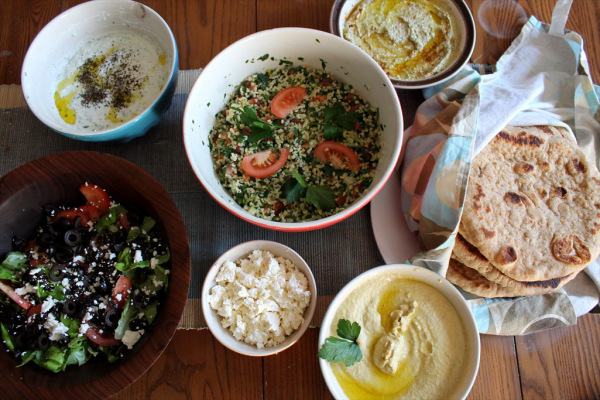
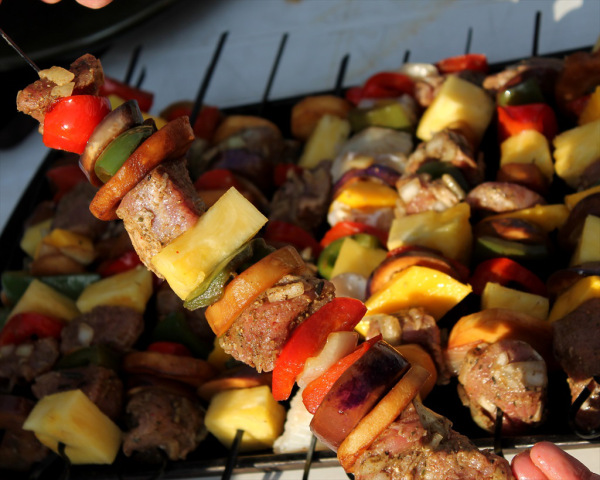
To keep Easter dinner simple on Sunday we got inspiration from Cheeses Murphy, a local late-night grilled cheese take-out window. Their “Cheester Egg” featured Havarti cheese, a fried egg, Alsatian sausage, and pesto mayo. Our version was Havarti cheese, a “cheese-less” omelet, salsa, and mayo on homemade rye sourdough. One suggestion I have is that when putting egg on a sandwich you should try to shape the egg to fit the bread. This is easy with a round loaf because you can utilize the shape of the pan. With the salsa on this sandwich a Monterrey Jack cheese would have gone quite well too, but it was great with the Havarti.
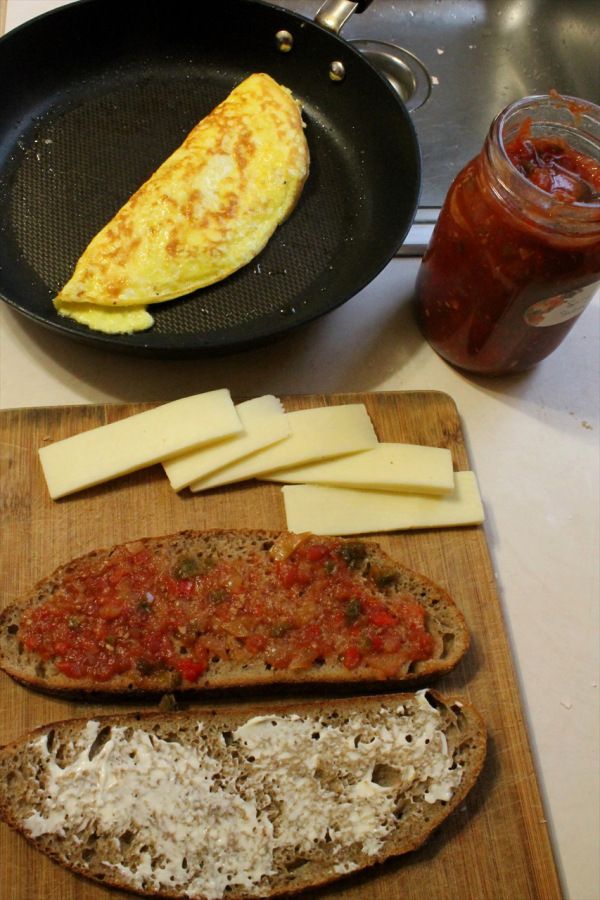
The Kale Slaw made a great addition to this meal and was very easy to make. Our recipe is inspired by one from Farmburger in Atlanta. We never did ask them how they made theirs, but we like ours lots!
Finally, finish out the meal with some fresh-baked bread and a side of hummus if you like. I’ve been baking 100% whole grain breads lately, with lots of help from Peter Reinhart’s Whole Grain Breads which is a wonderful book. It’s easy to make a 100% local bread with his recipes too which I’ve been very happy about (well, I guess it’s more like 98% local since the yeast and salt are not local… accept for the sourdoughs).
Mushroom-Leek Frittata
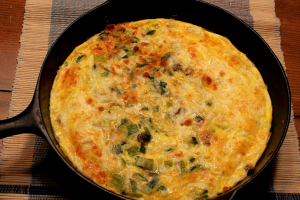
- 1 Tb. oil
- 3-4 leeks, chopped
- ½ lb. mushrooms, sliced
- 5-6 eggs, whisked with a splash of milk
- ½ c. cheese, shredded
- Pepper
Begin by heating the oil and frying the chopped leeks and sliced mushrooms in a cast iron pan for about 10 minutes. Meanwhile, mix the eggs, splash of milk, ground pepper, and shredded cheese.
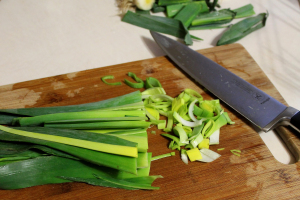
When the leeks and mushrooms seem to have softened, add the egg and milk mixture and cover the pan with a lid. Let the frittata cook until it has set, or firmed up.
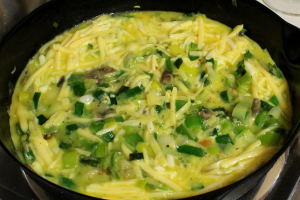
Then transfer it to the oven and broil it until it is nicely golden. Serve as soon as you like the color! (I enjoyed topping my leftovers the next day with a good spicy salsa, but that’s just me).
Kale Slaw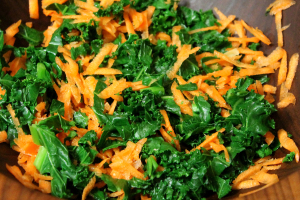
- 5-10 medium kale leaves, chopped
- 1 carrot, shredded
- ¼ c. cranberries (these aren’t local but at least are from Ontario!!)
- ¼ c. (candied) pecans/walnuts/almonds or sunflower seeds (optional)
- 2 Tb. olive oil
- 1 Tb. balsamic vinegar
- 2 Tb. mayonnaise (this is what holds everything together – an emulsifier)
- 1 Tb. lemon juice
- 1 Tb. honey
- Salt and Pepper
Begin by preparing a steamer—I use a bamboo steamer set over a frying pan with a half-inch of water in it. Heat over medium heat. Chop the kale into ribbons, about 2 inches long and ½ inch wide. Steam them for about 5 minutes, long enough for them to turn a wonderful green color and soften without becoming limp and dead looking. If your kale is really young and you like the taste fresh then you can do without steaming, I use an early Red Russian Kale from my garden this way. While steaming the kale, shred the carrots. If you like to sweeten this dish which I sometimes do then candy the nuts. To do this add the nuts to a frying pan with 1 Tb. butter, 1 Tb. sugar (or honey, but it makes it stickier), a splash of water, and a dash of salt. Fry, stirring occasionally, until the nuts darken. It’s a fine line between getting them crispy and burning them so this takes a few tries maybe to get it just the way you like.
Mix the kale and carrots together and toss with the dressing, reserving some if you like your salad a bit lighter. Top with the cranberries and nuts or sunflower seeds (which in the version pictured I didn’t do).
100% Whole Wheat Bread
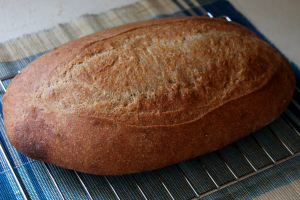
And the bread…. Well, long story short, I would recommend getting Peter Reinhart’s Whole Grain Breads. But in the meantime you could also just try this recipe from the book. On that blog the bread is cooked in a bread loaf pan while mine is baked more free-form. Either way, it’s the same recipe with different shapes.
*Update: You can also try our 2:2:2 simple whole grain bread recipe or our go-to sourdough recipe.



